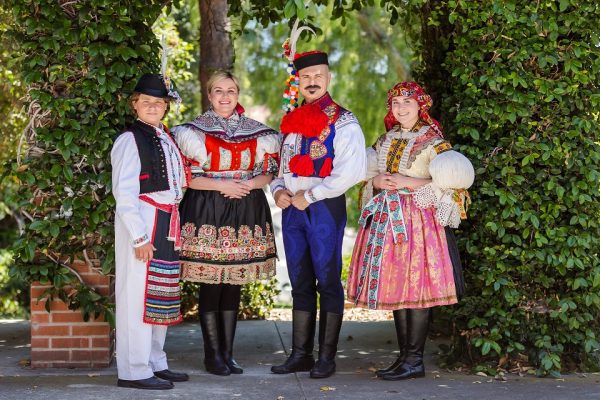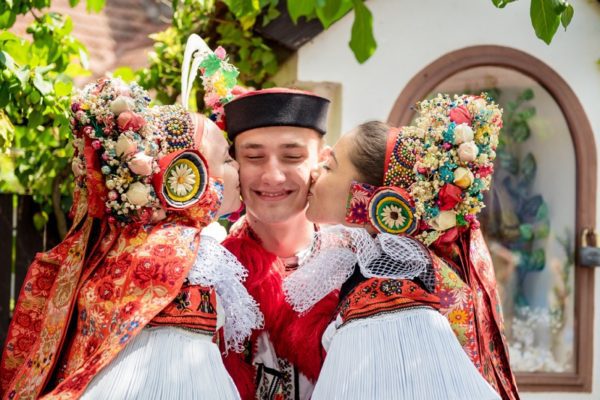Dancers with the precision, athleticism and enthusiasm of Lúčnica, a Czechoslovak folk ballet, do not come along every day. This is an almost continually fascinating group of expertly trained and excellently choreographed dancers presenting a show unlike any other. I learned about them from an old program I received from their tour in 1976. At that time, Czechoslovakia (CSSR at that time) was under Soviet rule. Though the program has language which expresses that, the dance company is still active today and they continue to put on an incredible show.
The following text is from the 1976 program. The black and white photographs are not in any particular order.
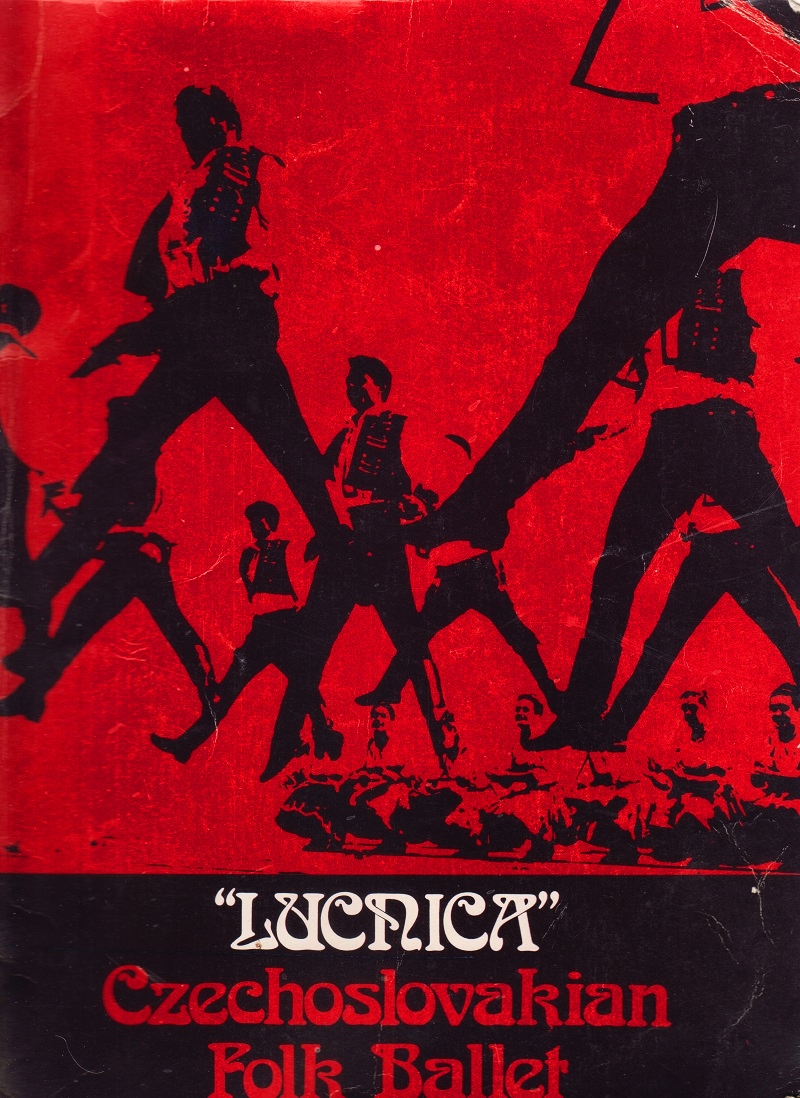
To know about the origin of Lúčnica it must be said that this fine company comes to us from Bratislava, the capitol of Slovakia. The Czechs and the Slovaks formed the Czechoslovakian nation in 1918 following the collapse of the Austro-Hungarian empire.
Although Czechoslovakia is considered a young nation, its history dates back to the 4th millennium BC, as archaeological findings confirm, with some of Europe’s oldest settlements. Six thousand years and a very prolific history later, Czechoslovakia has become the world’s largest per capita producer of steel, the largest supplier of engineering products in Eastern Europe, and the second most prosperous country in the entire Socialist world!
In this progressive country one important part of life is art. The Czechs and the Slovaks are nations of musicians with such famous national composers as Smetana, Dvořák, Janáček, and Martinů. In literature one name comes up immediately: Jaroslav Hašek, the writer of the Good Soldier Švejk. And the theater? Czechoslovakia is claimed to have more theaters for its population than any other country in the world!
Lúčnica was founded in this rich cultural milieu in 1948 by young Slovakian enthusiasts.
Lúčnica derives its name from the lush, green meadows in which the youth of the mountainous Slovakia meets to sing the charming songs of the land and to perform their radiant dances, which signify their prowess and determination for a happy future.
When Lúčnica began its performances in 1949, it received an overwhelming response from the public but mostly from Slovakia’s youth in particular. Soon excellence and technical skill became the standard for its artists. Recruiting of new members was accomplished by judging the individual’s performance gusto and spirit and professional dancing ability became a prerequisite.
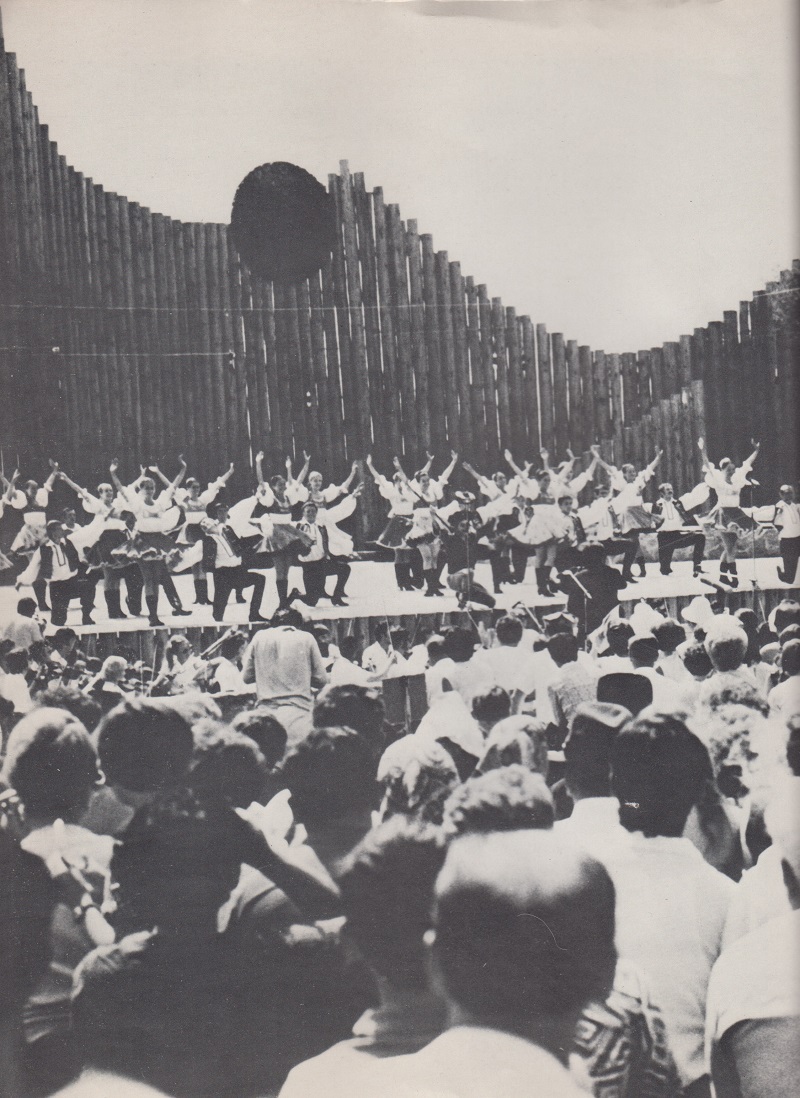
The orchestra of today began as a mere accompaniment for the dancers. As Lúčnica began to perform regularly a full orchestra was selected in competition. This fine orchestra, under the direction of Miroslav Šmíd, its conductor, could stand on its own feet with smashing success, since all of its members are accomplished graduates from the conservatory in Prague and Bratislava.
To include all of the rich variety in today’s program, extensive research and endless travels to remote villages was required over the years. Most of the dancers incorporated in the program now were either conceived or staged by the choreographer, Ing. Štefan Nosáľ, a man of great capacity and demands for perfection.
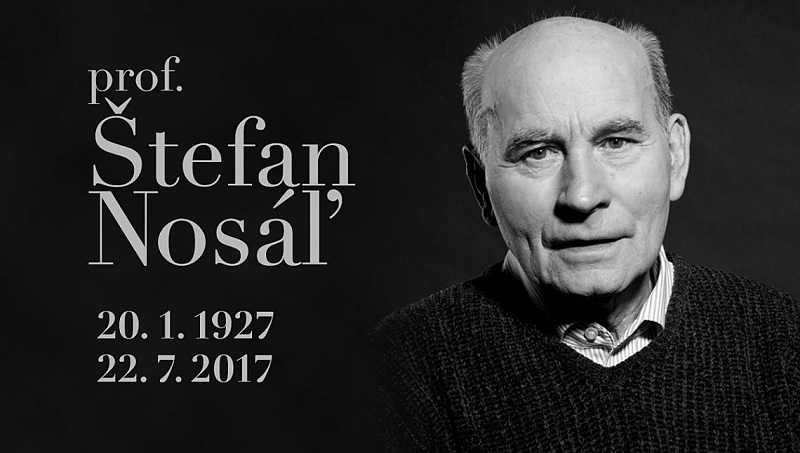
What started out as a dream of young enthusiasts in 1948 – to create and maintain a folk ballet presenting the country’s most beautiful songs and dances to the people of Slovakia – has long since become reality. It only went further than the founders had imagined.
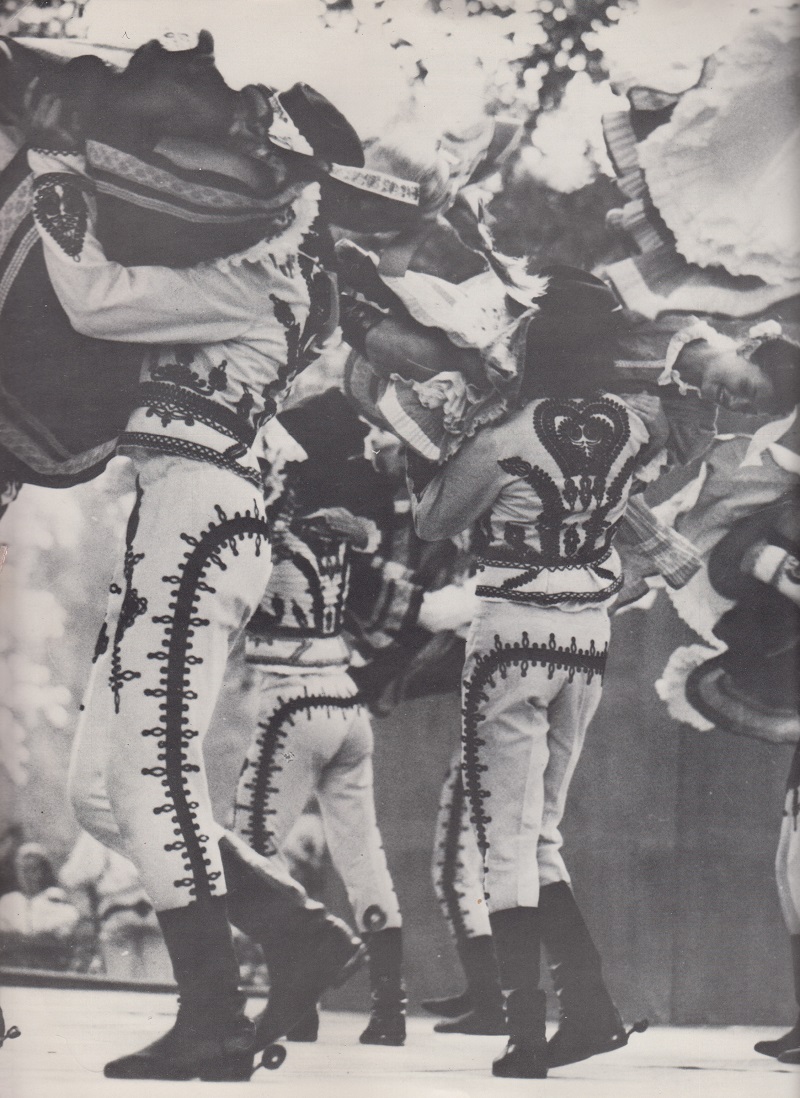
Today Lúčnica is one of the world’s leading folk ballets. Only one half of all its concerts are given at home. International demand for this exciting company has brought Lúčnica successes on four continents and its artistic achievements have been rewarded with the Order of Labour, the Laureat State Prize, the Gold Medal at Brussels, and many honors and decorations.
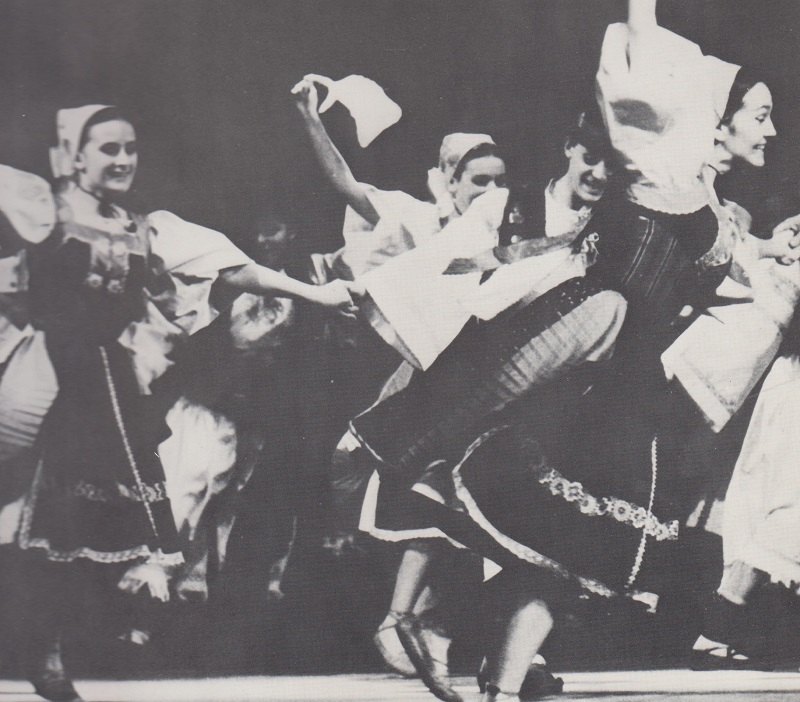
The talent and professional excellence ofits artists, the gorgeous costumes and rich embroideries, and the radiant and stunning execution of the performances maintain the quality of Lúčnica as well as its place in the top rank of the world’s finest folk ballets!
PART ONE
THE ŠARIŠ POLKA
Choreography: Štefan Nosáľ/Music: Svetozár Stračina
Quite often cavalrymen of the Šariš region in Eastern Slovakia meet beautiful young girls eligible for marriage. On these occasions the men put aside all their weapons but their spurs, take the girl of their choice and engage in a dynamic and fast-paced dance to determine the skills of the girls. The ringing of the spurs and the hand-clapping provide the rhythmical lead to be followed by all the colorfully costumed participants.
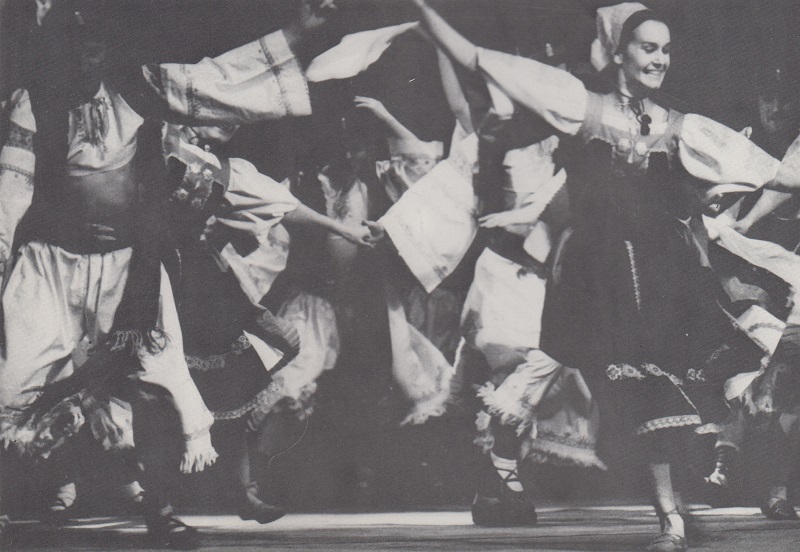
THE TOSSING DANCE
Choreography: Pavol Butor/Music: Miroslav Šmíd
Birthday parties, reunions, and seasonal celebrations are frequently the occasion for the Vyadzovana Dance, a popular dance for one to thirty couples from Trenčín in Western Slovakia. The Vyhadzovana increases gradually in its complexity – the men begin to hurl their partners through the air, onto their knees, hips, and shoulders to show off their manly strength and ability to handle a girl always safely.
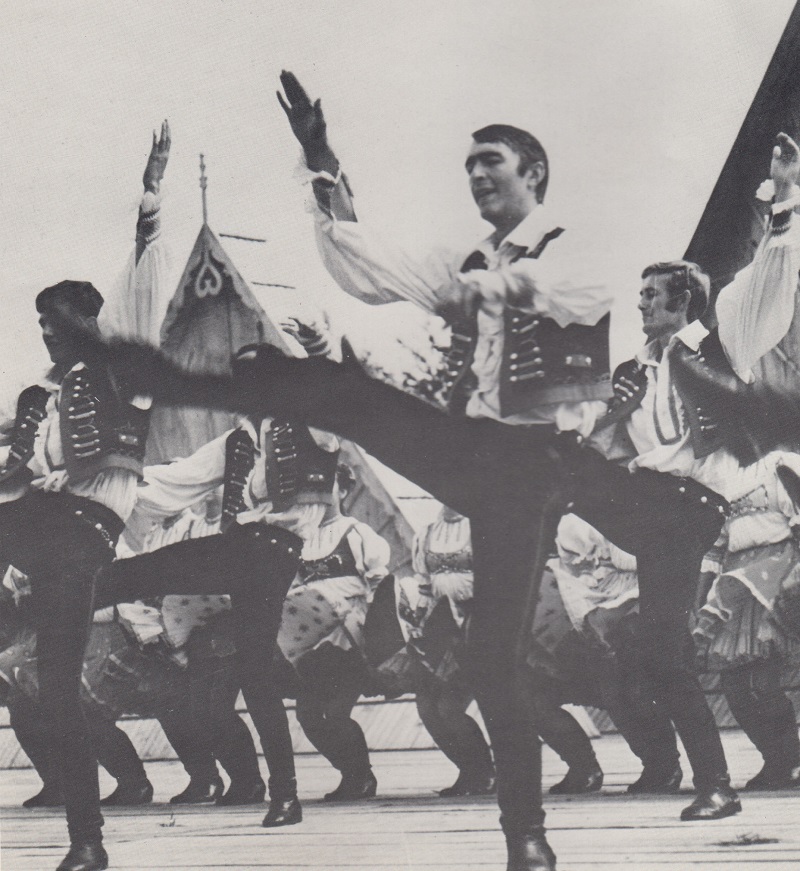
FLAIL DANCE
Choreography: Štefan Nosáľ/Music: Tibor Freso
The flail is an ancient hand tool for threshing grain. It consists of two pieces of wood, the five-foot long handstaff and the one-foot beater. The flail was the principal method of threshing 7 bushels of wheat, 15 bushels of barley, or 20 bushels of buckwheat in a day’s work. Originating from Očová in Central Slovakia, this dance was a highly acrobatical game of the threshers until it was adopted for the stage by Štefan Nosáľ.
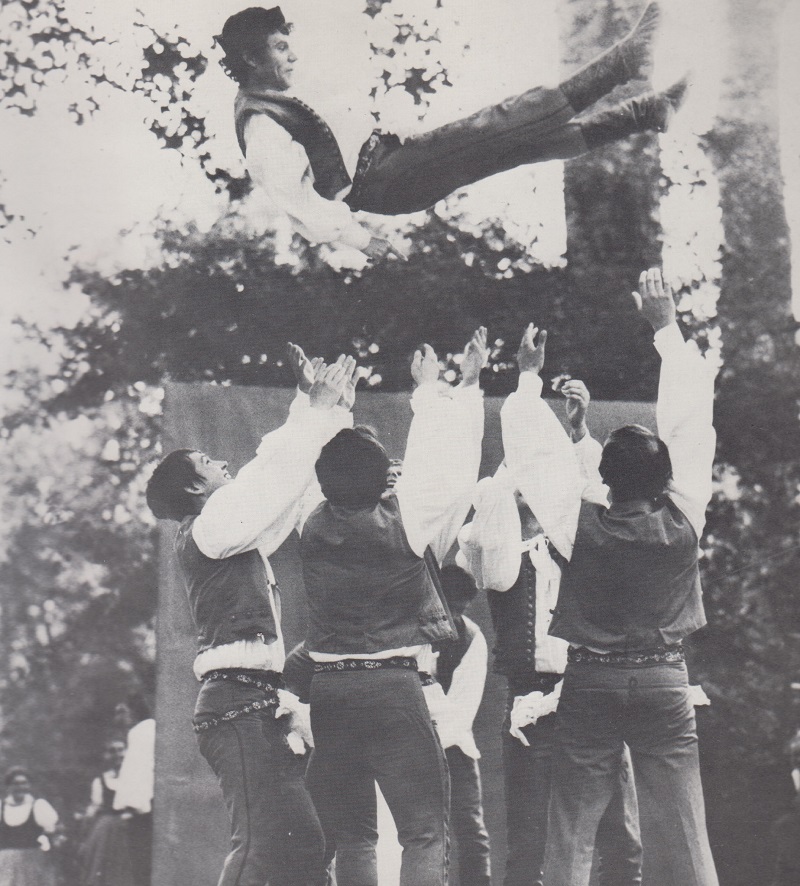
SPRING ARRIVES
Choreography: Štefan Nosáľ/Music: Svetozár Stračina
This ritual dance originated from the customs of the pagan Slavs, which is a festive ceremony held in the Liptov region to welcome the arrival of Spring. Groups of young women, carrying oak twigs and birch branches through the greening pastures praise the long awaited Spring in song. As the Spring arrives, symbolized by a beautiful girl carrying a young tree, the girls surround it, stretching out their hands and bidding the Spring to walk on their arms as a sign of respect and passionate love for Spring.
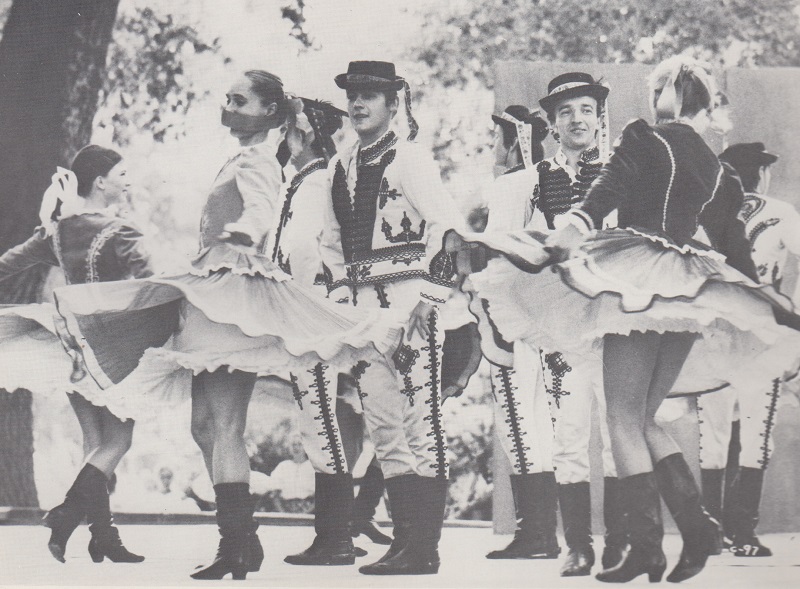
GAMBOL OF THE MAVERICKS
Choreography: Štefan Nosáľ/Music: Svetozár Stračina
A group of teenage boys stroll through the lush green meadows of the Liptov region, enjoying their summer holiday in the warm sun. Feeling free, strong and adventurous, the lads begin to imitate the sounds of nature about them and with youthful exuberance mimic the behavior of the animals they see. What develops is a variety of ”impersonated” animals from grasshoppers to wireworms, from sheep to horses. These amusing imitations and acrobatics of great vitality provide a gay but surely difficult to execute spectacle.
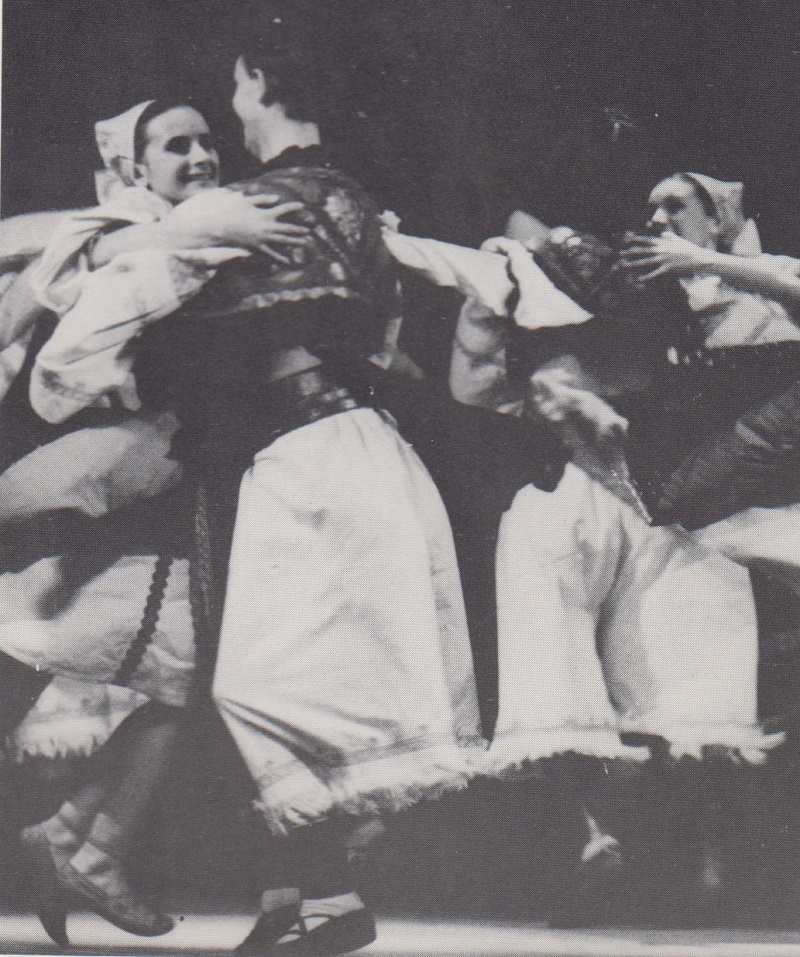
ČIRČIANKA
Choreography: Štefan Nosáľ/Music: Svetozár Stračina
The young women from Čirč, a village in northeastern Slovakia, are well-known for their physical prowess and good posture. In 1967, Štefan Nosáľ visited Čirč and observed the dances of these beautiful young women. Based upon his observation and further research, he created the Čirčianka of Lúčnica, which displays precisely executed dance steps and movements, no matter what the speed of the rhythm. These dignified women in their picturesque pleated skirts perform in unison at all times and like to be watched, daring any man to step in and keep the pace.
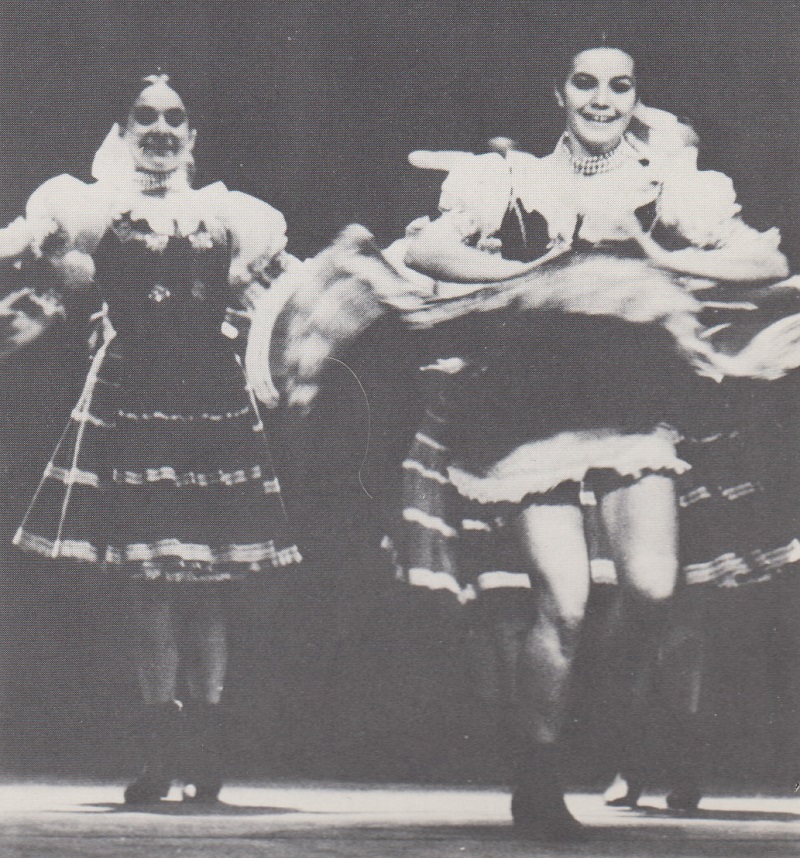
FUJARA
Music: Svetozár Stračina
The Fujara is a very old shepherd flute from the mountain region of Slovakia. It produces strange and unique sounds from its five-foot tall wooden body. Lovely folk melodies are presented here on the Fujara and other flutes.
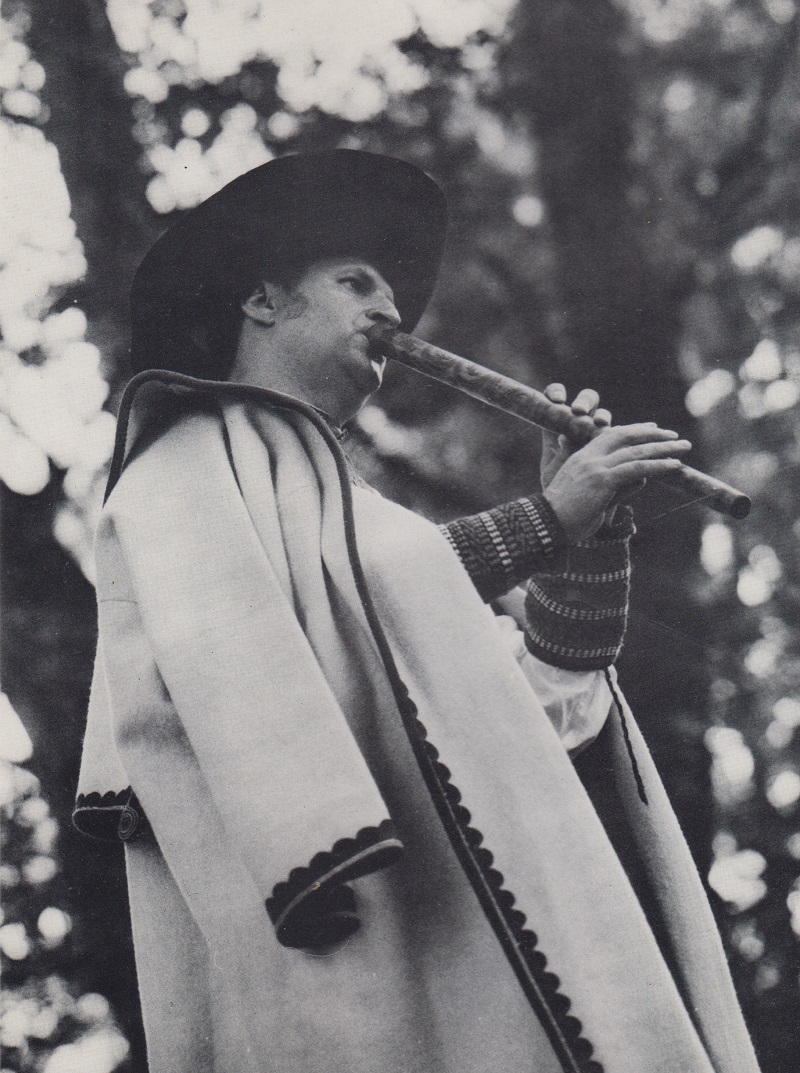
DETVA FESTIVAL
Choreography: Štefan Nosáľ/Music: Tibor Andrašovan
The Detva Highlands near Banská Bystrica have often been identified as the originator of Slovakia’s most characteristic folklore. The bare midriffs in the men’s costumes, the incredibly fast foot work of the dancers, and the dynamic participation of the girls in these dances are synonymous with the Detva Highlands and countryside.
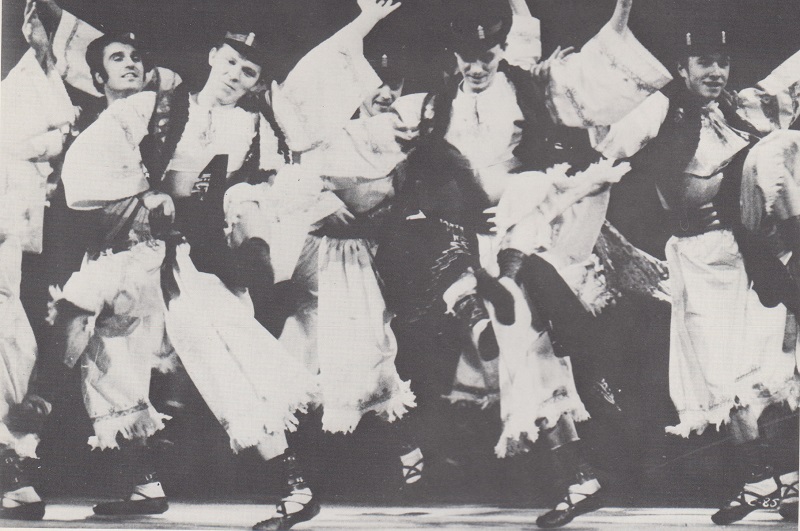
PART TWO
THE TEKOV GIRLS
Choreography: Štefan Nosáľ/Music: Miroslav Šmíd
A group of young girls gets tired from the long walk to the market and stops to rest. They set down their baskets and begin to dance with and for themselves. The gorgeous costumes are highlighted by the costly and rich diadems which adorn the hair of the girls, symbolizing that they are princesses, waiting for their prince to show.
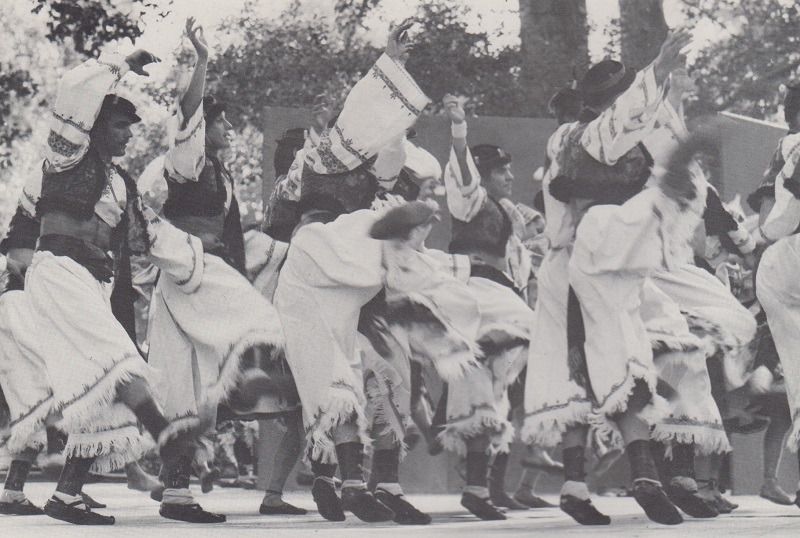
ROMANES
Choreography: Štefan Nosáľ/Music: Juraj Farkaš
The Gypsies have become the most unusual and most romanticized people in the world. They have an unsurpassable passion for music and dance, which bursts out at most joyous occasions with all its vehement vitality, high emotion and musical excellence. It is unique and expressive of the temperament of its people. The composer Franz Liszt said, ”The drive for complete freedom and social independence, the nomadic life style, and the love of music and dance comprise the character of the Gypsies. Their entire life is pure sentiment.” This group of Gypsies, cheerfully contemplating the future, move slowly into the highly rhythmic Čapáše (Tshapatshe) until their girls arrive, exciting the men quickly and driving them to a frenzy when they join the men in this exciting dance.
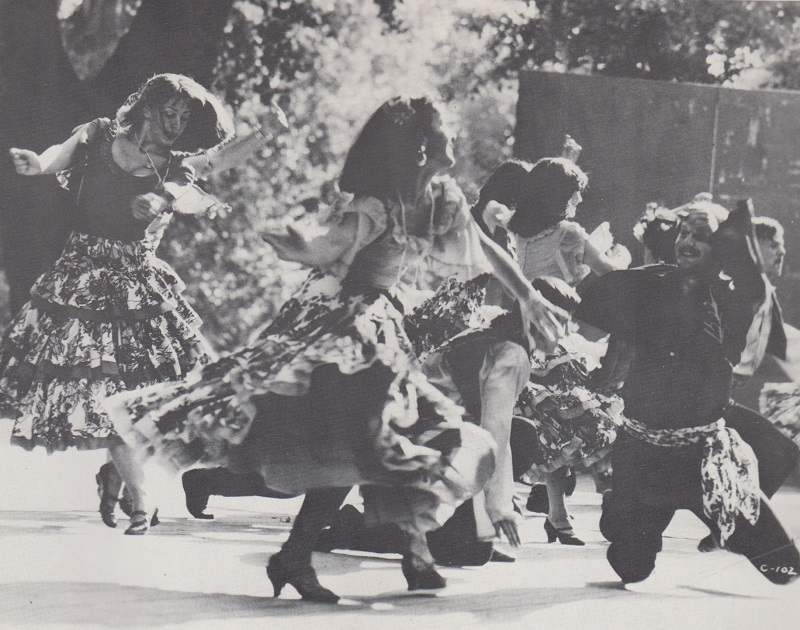
OUR GOAT
Choreography: Štefan Nosáľ/Music: Svetozár Stračina
A witty play with gymnastic elements is the heart of this encounter between three boys and a girl and a gaily romping goat to the sounds of the ancient bagpipe.
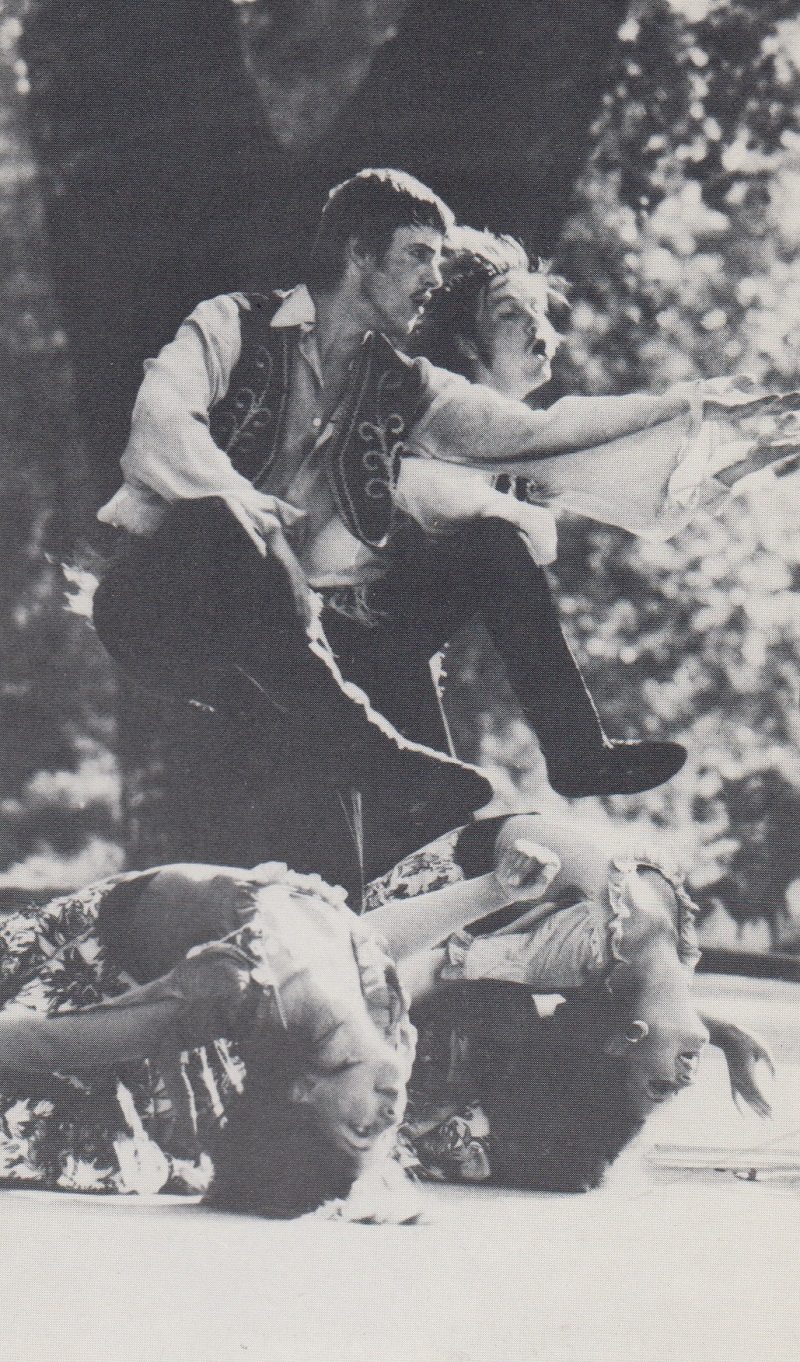
VALASHKA
Choreography: Štefan Nosáľ/Music: Tibor Andrašovan
This men’s dance is in celebration of the folk hero Juraj Jánošík who had fought with his men in the mountains of Slovakia without defeat and who became a symbol of the fight for freedom. Juraj Jánošík’s men used large hatchets, called valaškas (shepherd’s axe), as weapons and tools in the woods. Since these men had to be ready at all times to defend themselves, they were never without their valaškas, not even in sleep!
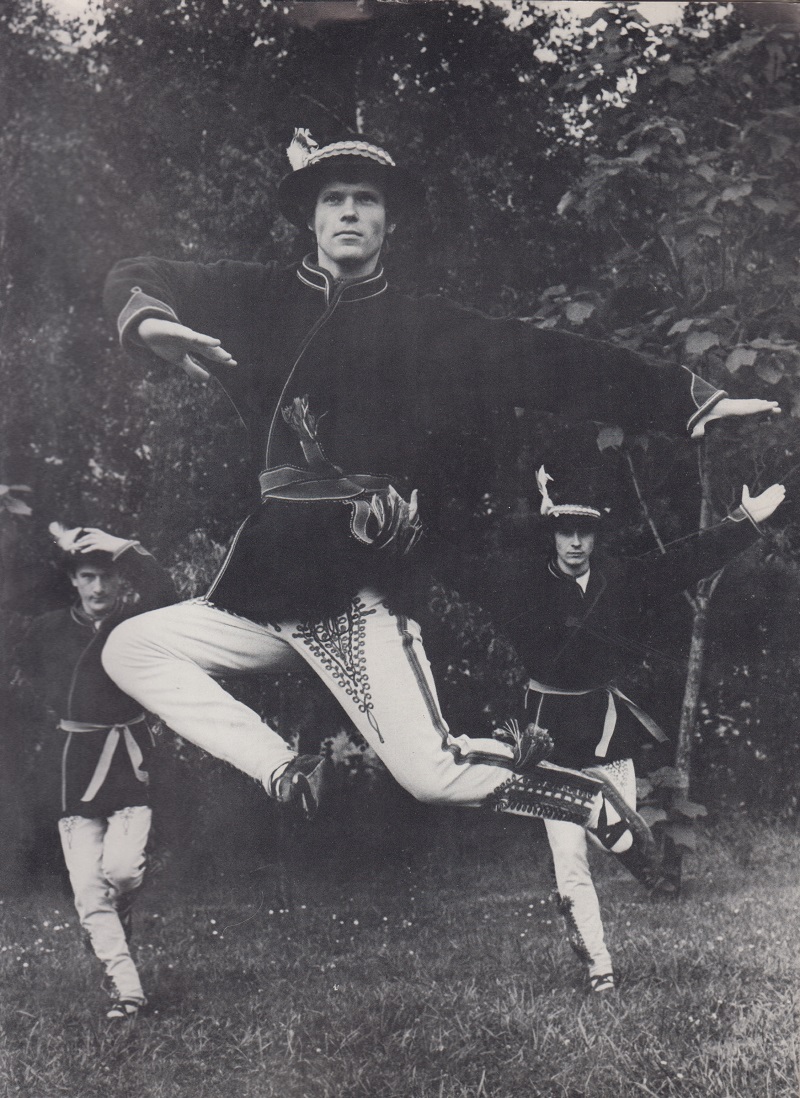
At social occasions these men would dance with a girl in one hand and the valaška in the other. Eventually the valaškas was incorporated into the dance as first performed in 1572. Later on the valaškas became the highlight and most intricate part of the dances. Excellent physical condition and skillful excellence are required for the execution of this dance.
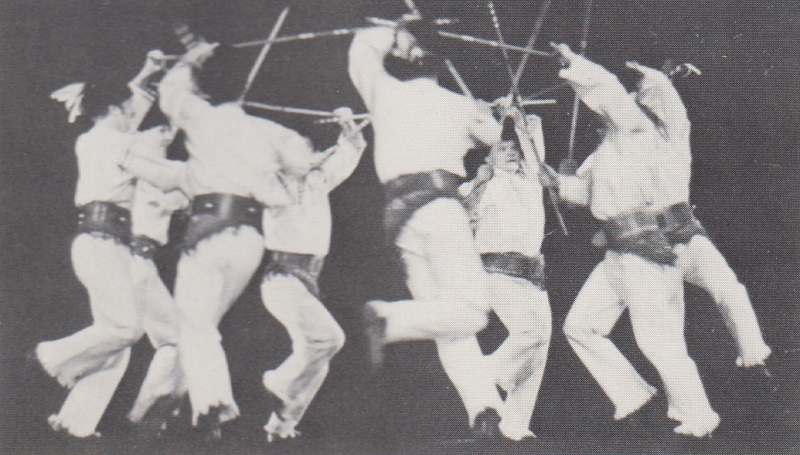
GIFTS FOR THE HONEYMOON
Choreography: Štefan Nosáľ/Music: Svetozár Stračina
Immediately following a wedding in the Slovakian village of Brezno, the bridesmaids of the newlywed girl begin to carry all gifts into the new house, in preparation for the honeymoon. This being a light-hearted affair, the bridesmaids play games and even try the gifts out. The gifts are symbolized by feather-bed pillows, a honeymoon requirement.
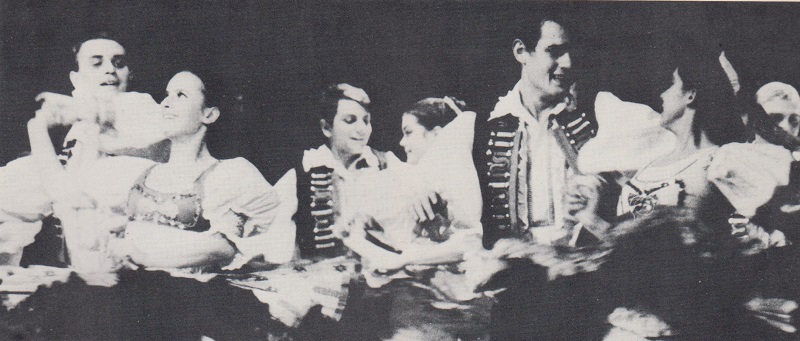
FUNNY HAT DANCE
Choreography: Štefan Nosáľ/Music: Svetozár Stračina
Competition among young boys is as common as necessary. With a comical note and surprise comes this dance from the Myjava territory in the heart of Slovakia. It is a game in which the boys match their wits in order to hold on to their hats the longest. This very popular dance was conceived in 1969 and first performed on opening night in Tokyo during Lúčnica’s first Japan tour.
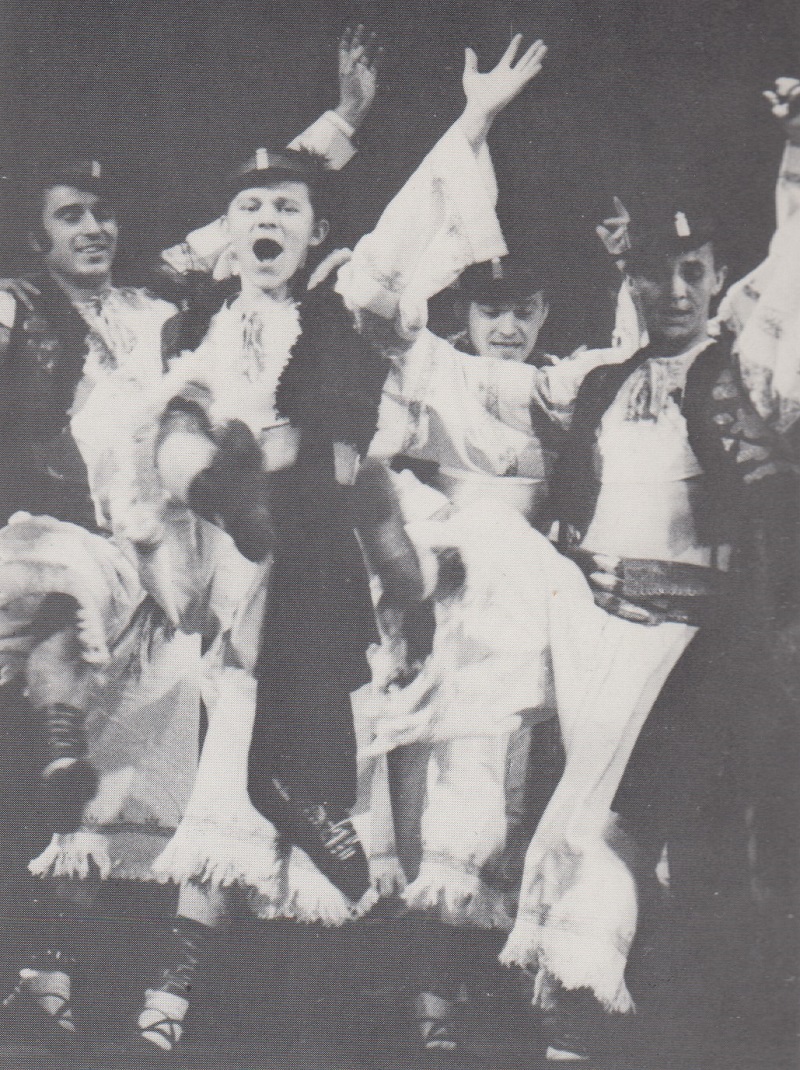
Lúčnica’s ORCHESTRA
Arrangements: Svetozár Stračina
The orchestra presents Slovak folk melodies, highlighting the more important instruments.
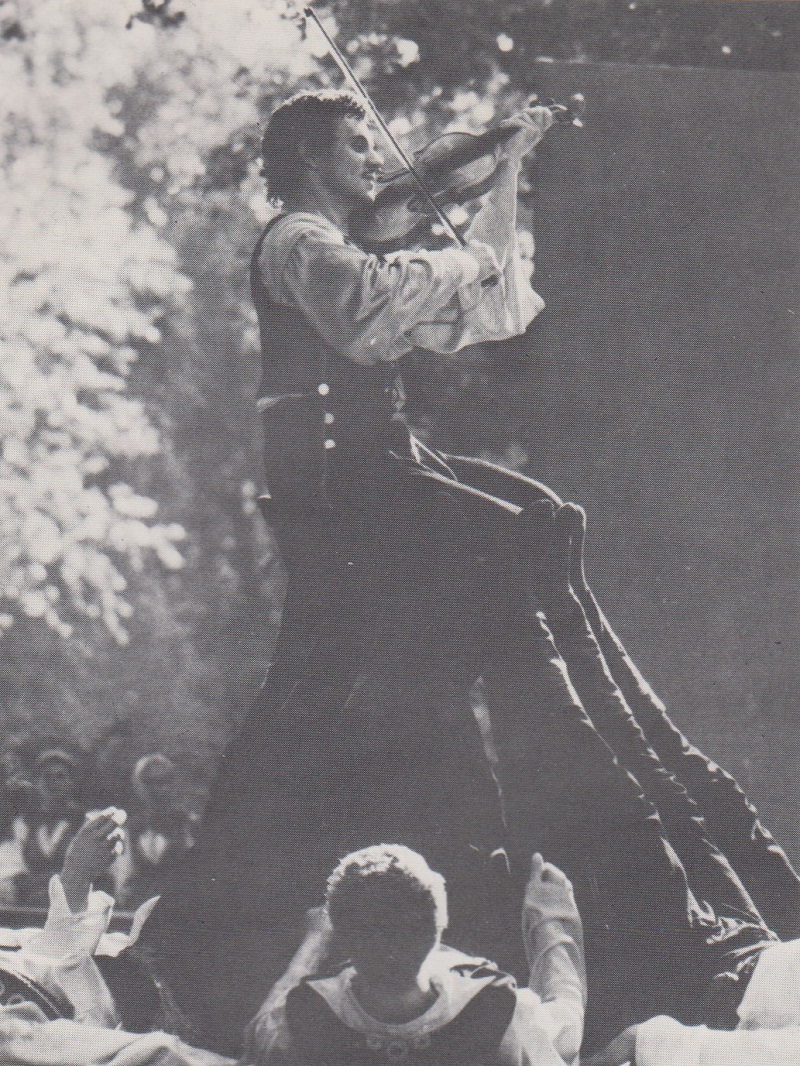
FESTIVAL IN ZEMPLIN
Choreography: Štefan Nosáľ/Music: Svetozár Stračina
For a long time now, a two-day festival is held at Zemplín annually for the region’s young men and women to get together, sing and dance, and to be merry. Many friendships and marriages begin here and most eligible participants prepare long in advance for this event by studying poetry, fixing up dresses and coats, saving money, and taking dancing lessons. Being well-prepared, the eager and over-charged youngsters forget most of what they have learned as they enter the market square with all the fun and dancing going on there. Both sexes are trying to please the other as a result of which a colorful spectacle unfolds with high leaps and jumps, quick and intricate movements, in a wonderfully worked out feast for the eyes.
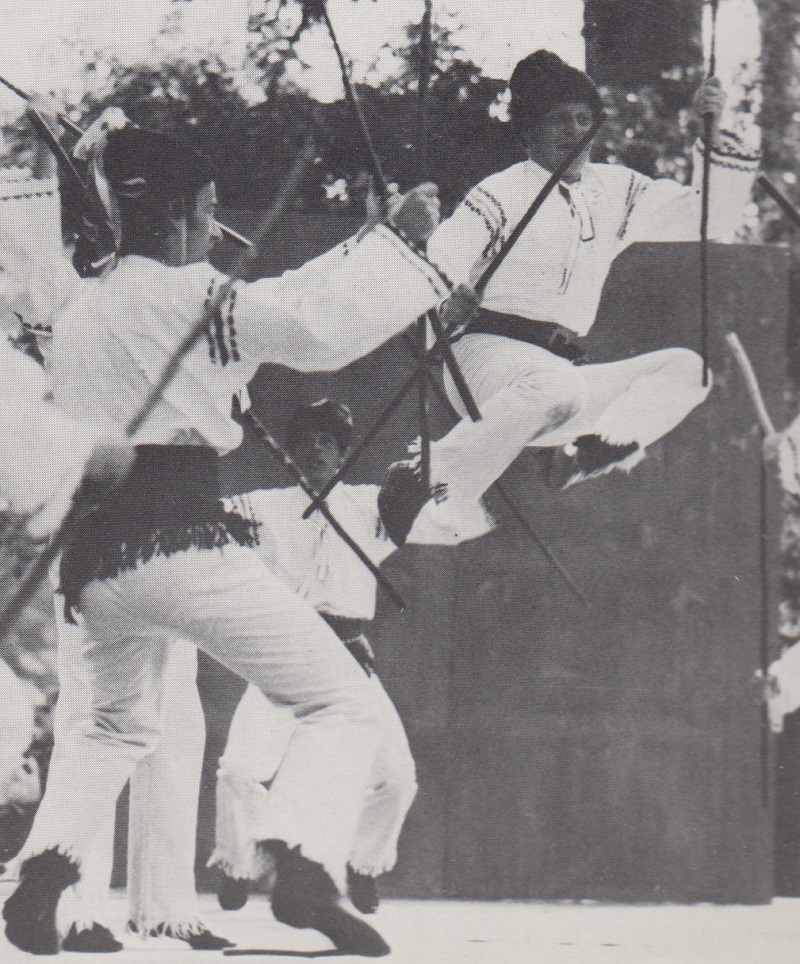
Material and Text in the 1976 program by: Emil Bartko, Katarína Veterníková, and Wolfgang Schimansky
World Acclaim | Then and Now
As you can imagine, the troupe was welcomed wherever they traveled. The following words of acclaim are also from the program but as you can see, the color photos below are much more recent! Lúčnica is alive and well and continues to bring Slovak culture and folklore to the world to this day.
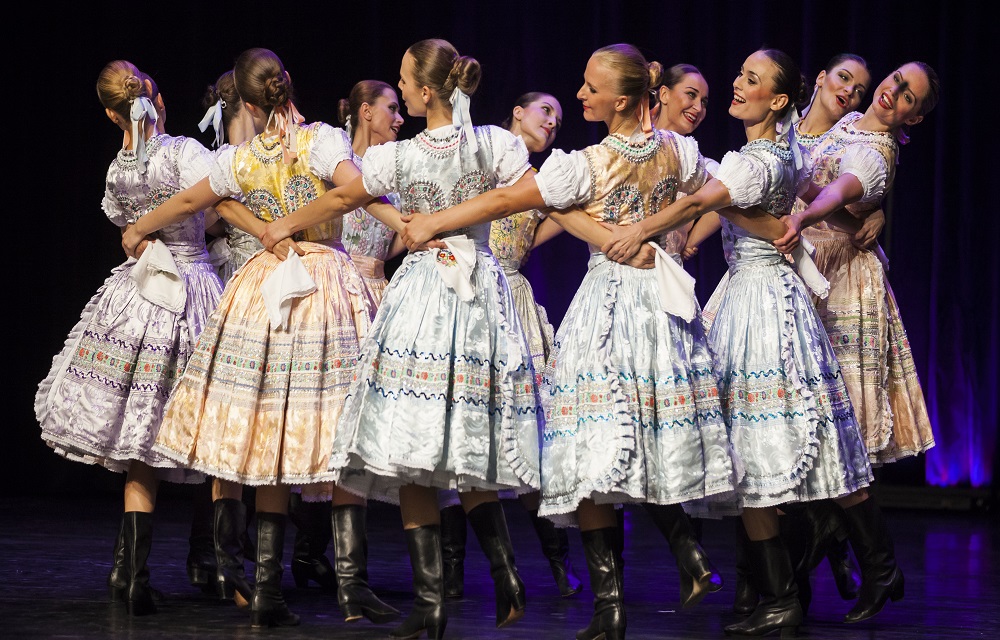
From MOSCOW:
“International popularity, joyous youth and talent are certainly characteristics which fully show the creative profile of the Slovak company Lúčnica. They brought to us the scent of the wide spaces, the fields and the high mountainous meadows of their country.” – Sovetskaya Kultura
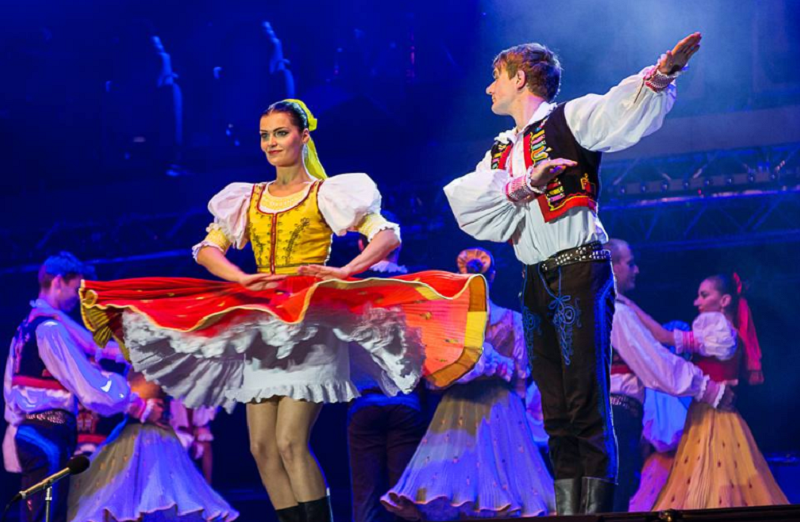
From ROME:
“The cultural orientation of the members of this company easily explains the high degree of quality, discipline and perfect expression of the dance as well as exciting and very musical communication.” – Paesa Sera
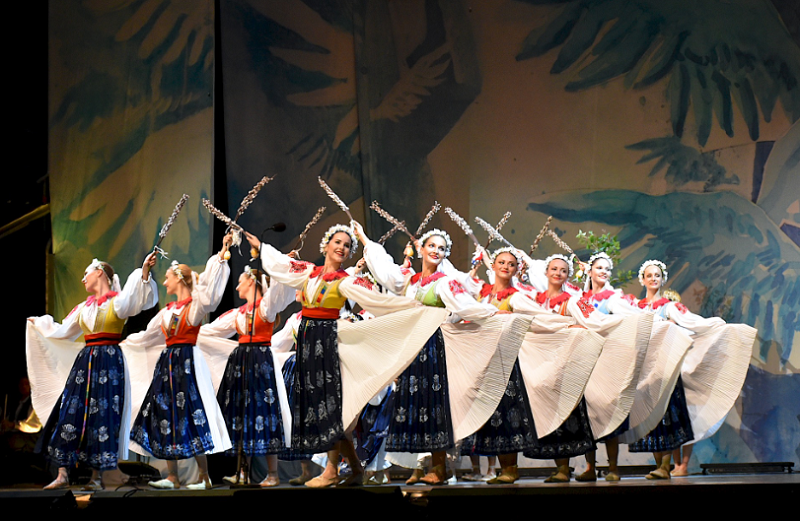
From STOCKHOLM:
“Youthful, beautiful and attractive girls and boys in handsome costumes of their land perform the most temperamental and complicated dances in fantastic tempos. They have dancing, music and rhythm in their blood! The audience became a part of it all, and together with the dancers they lived through this whole whirl of life and joyous living.” – Morgen Tidningen
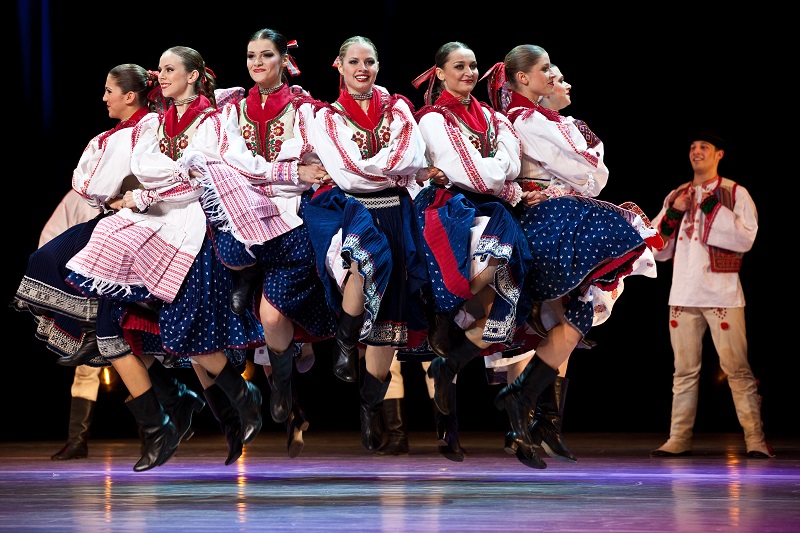
From RIO DE JANEIRO:
“It was the joy of youth of this country-embracing the mirror of the nation, the people and the race. The movements are fascinating and melodious. They bring nations closer together, removing boundaries without flags and without hate. We welcome and stand in awe and wonder at the corps of young artists who communicate this spirit! They are young enough to conquer the world with one accessible weapon-art.” – Radio-Television
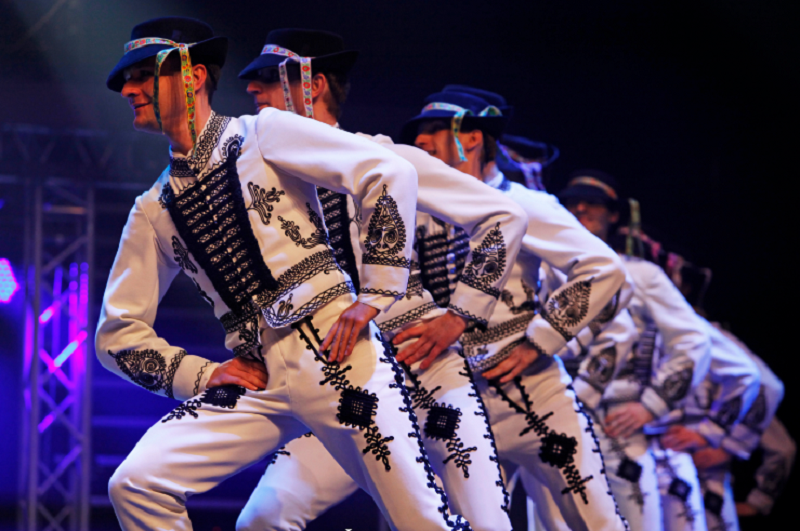
From MUNICH:
“The evening was a demonstration of talent for dancing to the degree of greatest virtuosity. The charm and beauty of the girls and the endless vitality of the boys with their acrobatic stunts is absolutely breathtaking!” – Mulheimer Zeitung
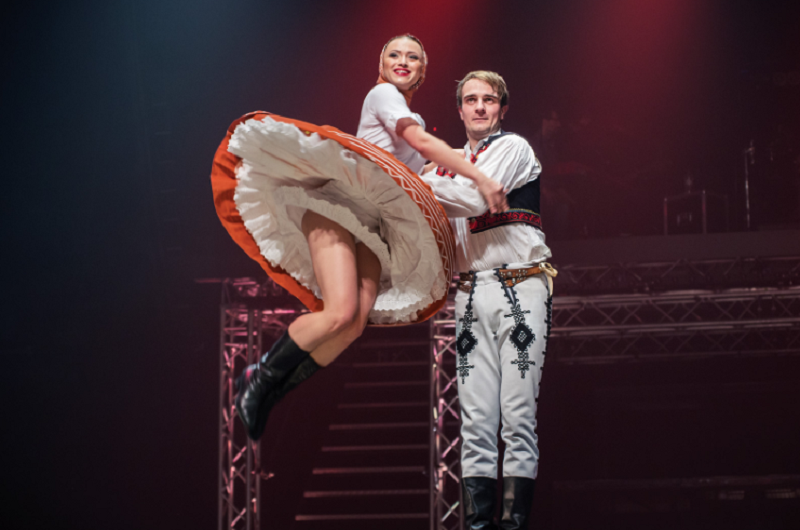
From OSLO:
“All of the dances were contagious-full of temperament and strength. The Brigand Dance was especially effective the muscular dancers working with their axes with the greatest virtuosity. It was really a fantastic evening!” – Morgenbladet
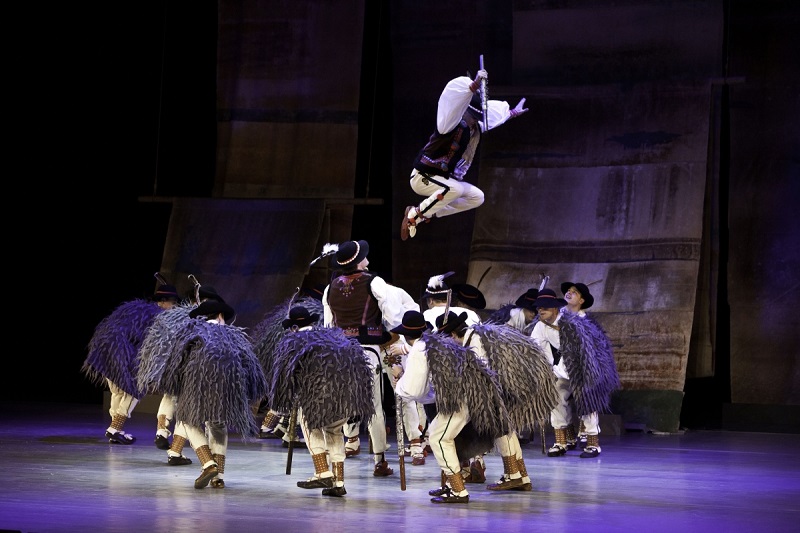
From SAO PAULO:
“The whole program was the embodiment of rhythm and the enjoyment of living. It is the kingdom of youth, nobleness and the beat of lively hearts!”- O Estrade de Sao Paulo
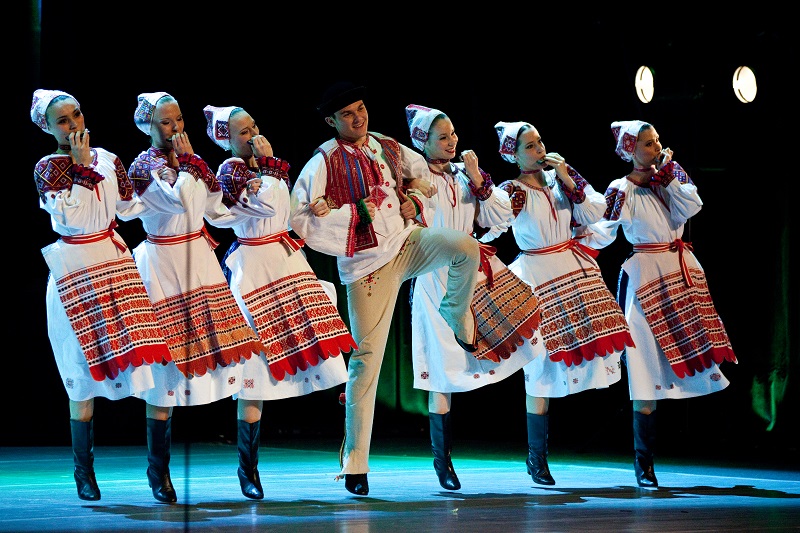
Slovakia, a picturesque country of fertile lowlands and rugged mountains, lies in the very heart of Europe. Thanks to its geographical location and humble size it has always been a crossroad of cultural influences of the European continent. Traces of the temperament of the East meet with the cultural heritage of the developed West, just as the melodies of the sunny South merge with the secretive magic of the North, all of them reflected in original Slovak lore that has been preserved until today. National folk songs, music, dances and handmade costumes are manifold and diverse, representing the specific regions of our country, each filled with its own poetics and dynamic esprit.
The Slovak artistic ensemble Lúčnica, an awardee of the highest rank at home and abroad, symbolizes the original culture of our nation, genuine in its dance, instrumental and vocal expressions. Slovak national art has found an honest representative in Lúčnica, abundantly spreading its unique and rich heritage to the excited domestic as well as international audience. It has become an artistic and generational link between the traditions from the past and the turbulent yet strikingly beautiful present.
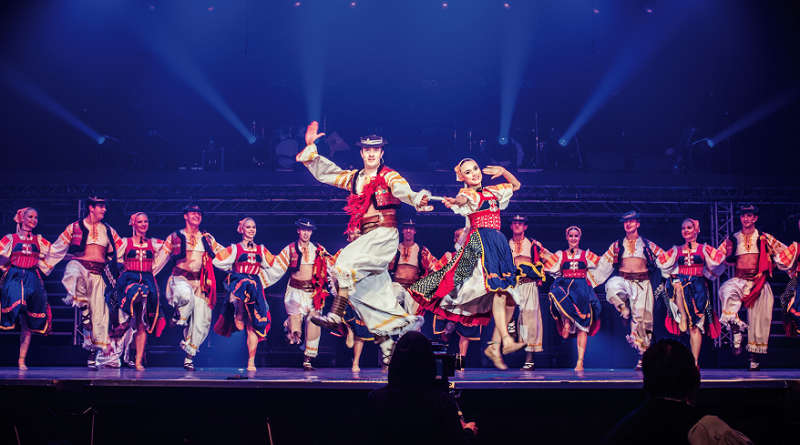
It is safe to say they Lúčnica is a cultural phenomenon and a diplomat of sorts for Slovakia (Czechoslovakia before 1993), representing it in the most universal language which does not need an interpreter – its original national culture.
Below are some highlights from the show:
“Lucnica” has a web page here: https://www.lucnica.sk/en/
They also have a news page, where they discuss appearing at the United Nations and dancing for members of the entire world here.
Finally, you can watch all of their colorful and entertaining videos (including all of the dances I mentioned above) on their own YouTube Channel. Enjoy!
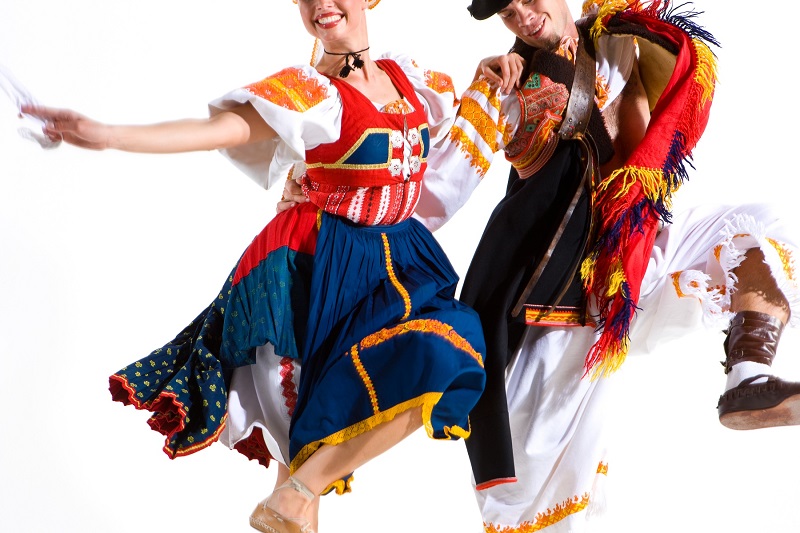
* * * * *
Thank you in advance for your support…
You could spend hours, days, weeks, and months finding some of this information. On this website, we curate the best of what we find for you and place it easily and conveniently into one place. Please take a moment today to recognize our efforts and make a donation towards the operational costs of this site – your support keeps the site alive and keeps us searching for the best of our heritage to bring to you.
Remember, we rely solely on your donations to keep the project going.
We appreciate you more than you know!
If you have not already subscribed to get TresBohemes.com delivered to your inbox, please use the form below now so you never miss another post.




